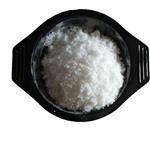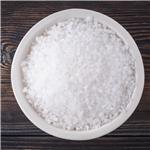Mesosulfuron methyl (AE F130060) was the second safened sulfonylurea herbicide for cereal crops to be commercialized, having been introduced by Bayer CropScience in 2001. Its strength is broad spectrum post emergence grass weed control. Mesosulfuron methyl, at a dose rate of 4.5– 15 g a.i. ha−1, reliably controls 24 different grass weed species from 12 different families. Among the commercially important grass weed species, it provides good control of Agrostis spp., A. myosuroides, A. spica‐venti, Avena spp., Lolium spp., P. brachystachys, P. minor, P. paradoxa, P. annua, P. trivialis, Pucciniella spp., and Sclerochloa kengiana. Additionally, mesosulfuron‐methyl controls, or has a strong suppressive effect on, some very persistent grass weed species, such as Bromus catharticus, B. diandrus, B. erectus, B. japonicus, B. mollis, B. tectorum, B. secalinus, B. sterilis, and Vulpia spp. The compound is applied on soft and durum wheat, triticale, and rye, together with mefenpyr‐diethyl as safener as the straight products “Atlantis OF,” “Silverado®,” and “Osprey®” or in combination with iodosulfuron methylsodium (“Atlantis WG,” “Cossack,” “Pacifica®”), diflufenican, and propoxycarbazone sodium.
“Atlantis WG” is positioned in market segments where grass weeds are the main target, whereas “Cossack” is a cross spectrum product that is active against both grasses and a large number of important broadleaf weeds. Mesosulfuronmethyl belongs to the group of modern OnePass® products. It acts predominantly via the leaves of treated weeds; however, highly susceptible grasses, such as Apera and Alopecurus, can also be successfully controlled by uptake of mesosulfuron methyl via the soil and the roots.
The safener mefenpyr diethyl, as with iodosulfuron methyl sodium, selectively accelerates the degradation of the active ingredient to nonphytotoxic compounds in cereals, but not in weeds.



